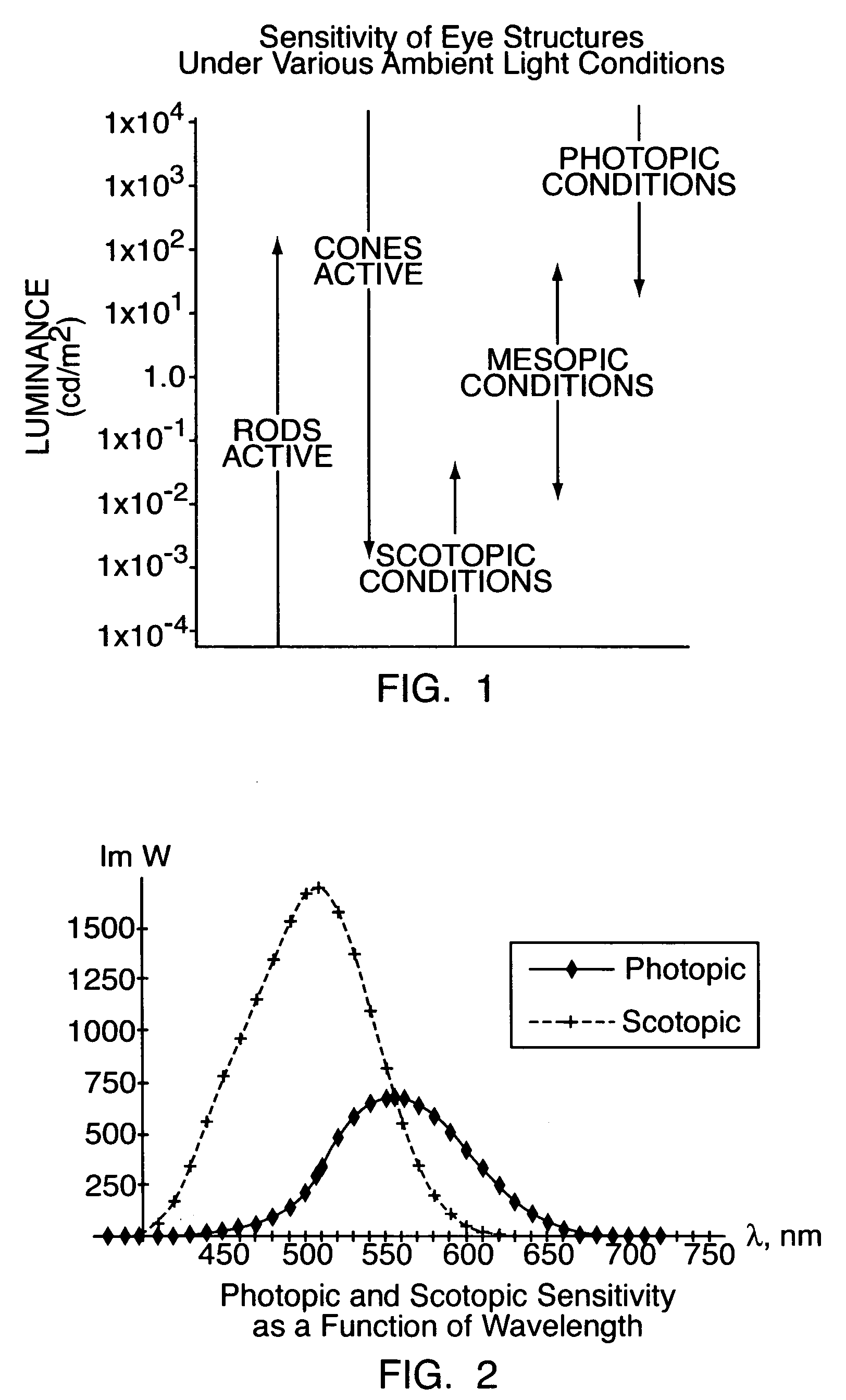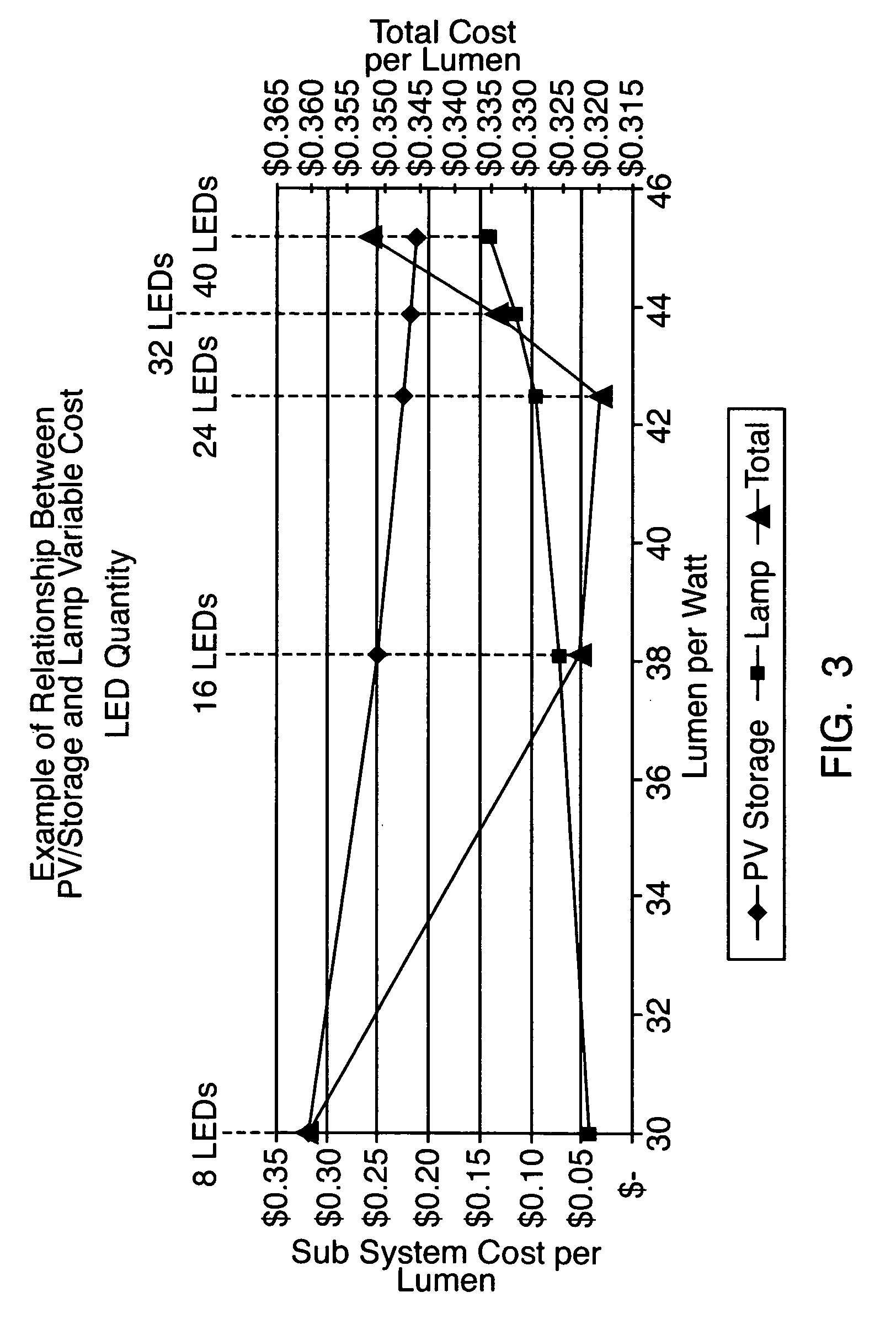LED lighting system
a technology of led lighting and leds, applied in the direction of electric variable regulation, process and machine control, instruments, etc., can solve the problems of artificially low luminous efficiency difficult to determine the true efficiency increase associated with leds operating at lower power levels, etc., to maximize the efficiency and effect of such systems
- Summary
- Abstract
- Description
- Claims
- Application Information
AI Technical Summary
Benefits of technology
Problems solved by technology
Method used
Image
Examples
Embodiment Construction
[0039] To optimize the cost of an efficient LED lighting system, the cost of various LED quantities is determined. A useful way to determine the costs of two or more LED quantities is as a variable cost of the LEDs as the quantity of LEDs increases, expressed as a variable cost per lumen. The per lumen variable cost is the total cost of the LEDs divided by the lumens produced the LEDs.
[0040] In practice, LEDs are typically arranged in series strings and additional LEDs are added by including additional series strings. LEDs in lighting systems are typically arranged in series strings based on an optimal system operating voltage. A typical LED can be safely operated (with its maximum current rating) at 3 to 4 volts DC (VDC). Systems considered “low voltage” must not exceed 50 volts anywhere in the system. Furthermore, electronic components rated below 32 VDC often come at a lower cost than components with a higher voltage rating. Under these constraints, an LED string voltage of appr...
PUM
 Login to View More
Login to View More Abstract
Description
Claims
Application Information
 Login to View More
Login to View More - R&D
- Intellectual Property
- Life Sciences
- Materials
- Tech Scout
- Unparalleled Data Quality
- Higher Quality Content
- 60% Fewer Hallucinations
Browse by: Latest US Patents, China's latest patents, Technical Efficacy Thesaurus, Application Domain, Technology Topic, Popular Technical Reports.
© 2025 PatSnap. All rights reserved.Legal|Privacy policy|Modern Slavery Act Transparency Statement|Sitemap|About US| Contact US: help@patsnap.com



